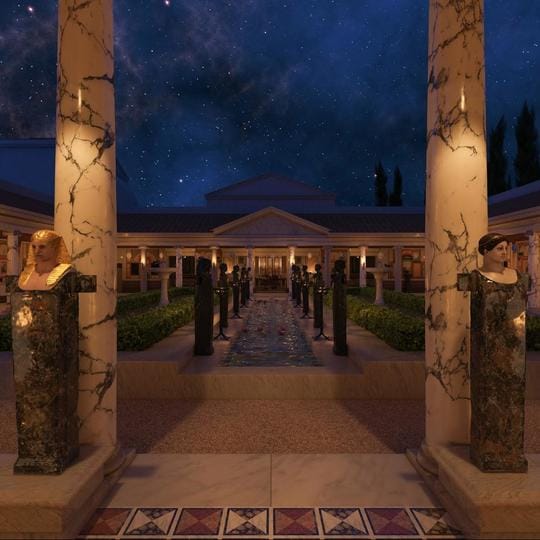Digital archaeologist Bernard Frischer explains how Chaos Cloud is helping virtual time travelers experience ancient history from the comfort of their homes.
Flyover Zone is embracing future tech to show us the past. Founded by world-renowned archaeologist Bernard Frischer in 2016, it’s taken time-travelers to ancient Greece, Italy, Egypt, and Mesoamerica—and, with people working from home due to the COVID-19 pandemic, it’s found a bigger audience.
Creating these huge historical renders has always been taxing on hardware, so Flyover Zone has embraced Chaos Cloud to offload its machines and free up its artists to work on its next project. We caught up with Bernard to learn about Flyover Zone and how Chaos Cloud rendering for 3ds Max has helped improve their workflow.
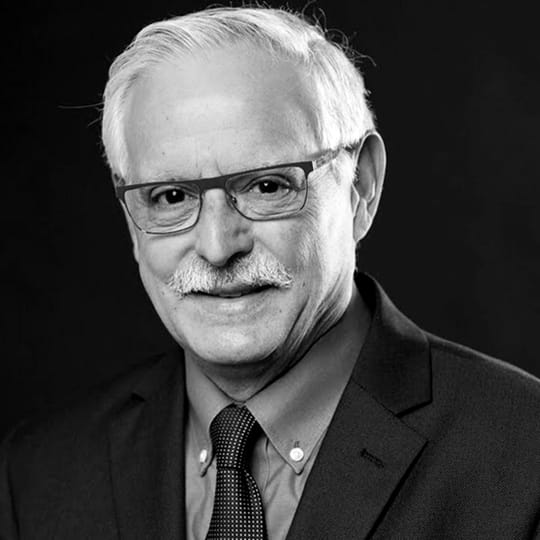
About Bernard Frischer
Bernard Frischer is a pioneering and award-winning digital archaeologist who has taught at universities around the world. From 1996 to 2004, he was founding director of the UCLA Cultural Virtual Reality Laboratory, one of the first labs to use 3D modeling to reconstruct cultural heritage sites.
Bernard is also the Founder and President of Flyover Zone, whose mission is to develop products and services that use 3D digital technologies to present cultural heritage sites and monuments to the general public.
Why did you start creating virtual tours?
Bernard Frischer: We founded Flyover Zone in 2016 to create educational applications in virtual reality (VR) headsets. However, our focus has shifted from VR headsets to desktops and laptops and cell phones and tablets once we saw the VR market was growing more slowly than we anticipated.
We decided to concentrate on bringing these tours to the general public with standalone virtual tours, which run on many different platforms, and Zoom virtual tours, which the average person working from home would know how to attend. As the world has been closed to most international travel, our applications give potential visitors the ability to learn about a site from the comfort of their homes on a familiar platform.
There are three ways people use our virtual tours. The first is at home, perhaps with family or friends. The second is on-site as an audio-visual guide. The third way is for people to connect via multiplayer, a feature that will be available by the end of the year. Our goal is not to replace real-world tourism but to complement it in five aspects: pre-trip preparation, post-trip recollection, on-site audio-visual guide, promotion of the site, and safe tourism. See point #8 of our FAQ for more information.
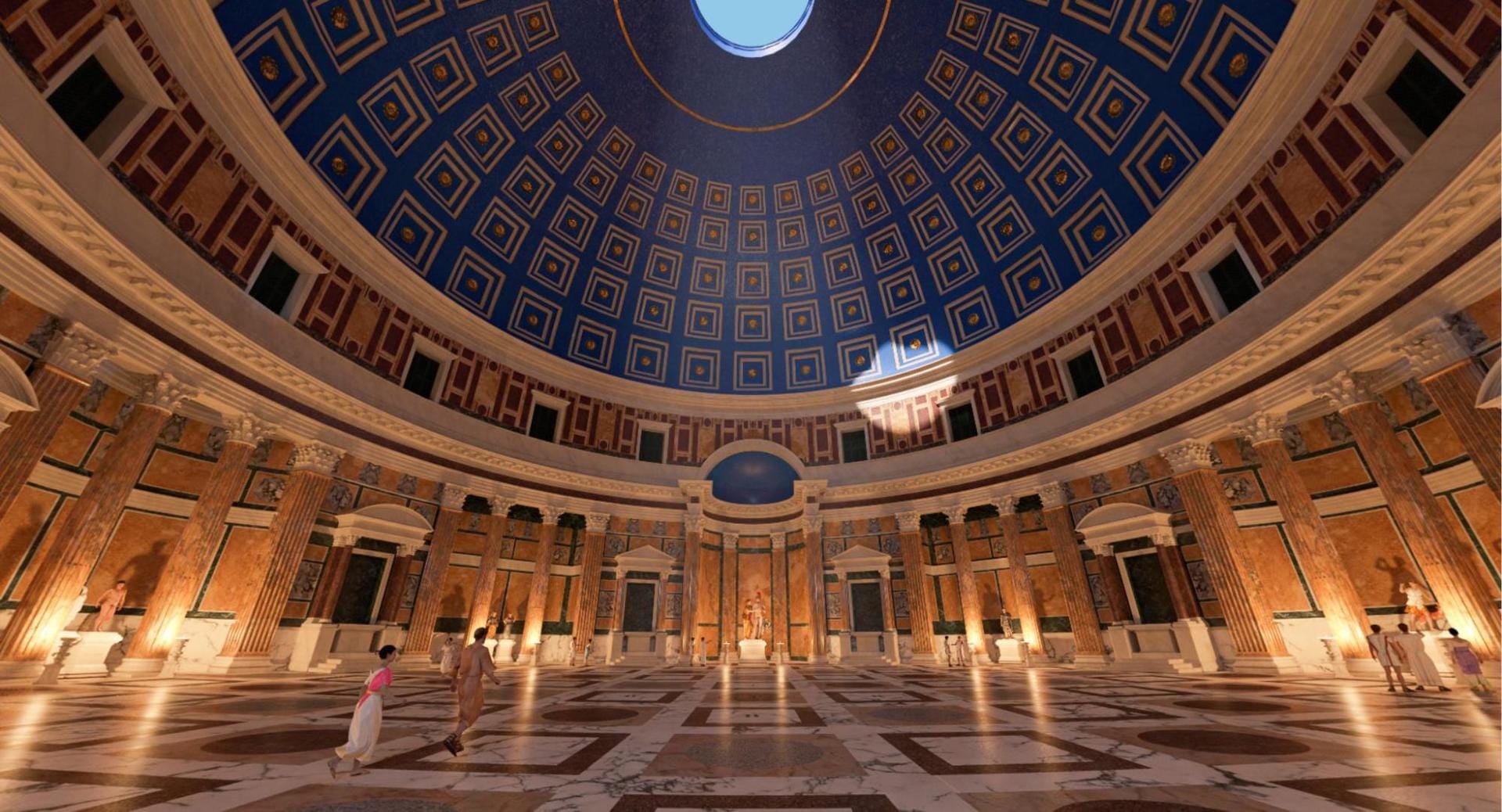
Interior of the Pantheon (Rome, Italy) as it appeared in ca. AD 140. Today, the interior looks quite different owing to various changes that have occurred over the intervening centuries.
How do you go about capturing the data for your virtual tours? What is the process?
BF: The first step in any new project is to recruit the world's leading experts. They supply our art department with scientifically accurate plans, sections, and elevations, whether published or unpublished. They work closely with our 3D modelers to vet the work in progress, offering suggestions for improvements and then reviewing the new versions produced. In some cases, the process can go through over 100 iterations before a model is declared finished!
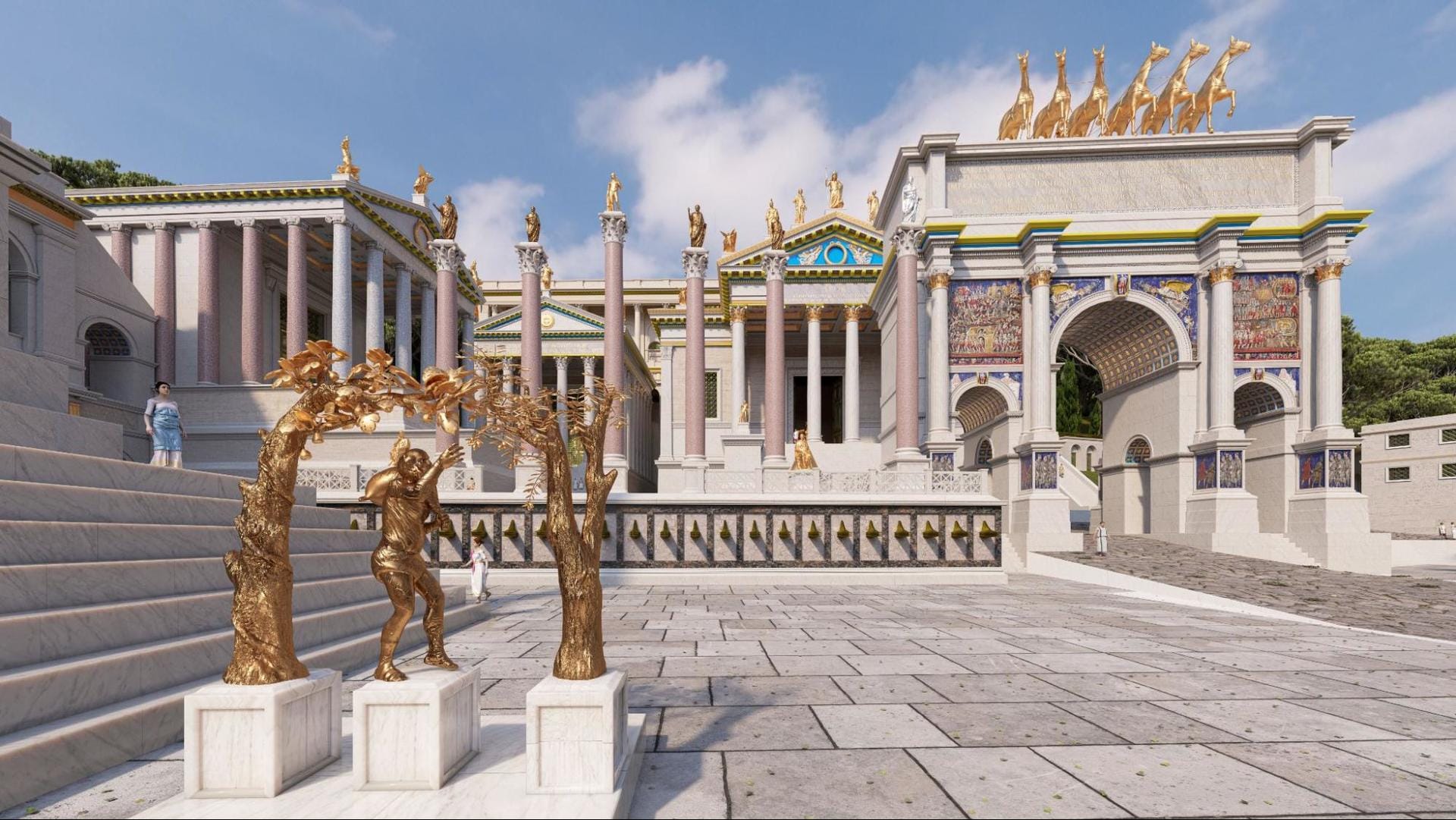
A view of the western Roman Forum (Rome, Italy) as it appeared in ca. AD 320. In the foreground is the statue of Marsyas. In the distance is the Augustan Rostra and the Arch of Septimius Severus. Behind the arch are the Temple of Concordia, the Temple of Vespasian and Titus, and the Temple of Saturn. Today, these monuments only survive as ruins.
What kind of projects do you create?
BF: Third-parties often commission projects, for example, “Baalbek Reborn: Temples.” In this case, the patron was a philanthropist who wished to raise global awareness of a cultural heritage site. Museums and sites also initiate work, which they use to promote visits and deepen understanding of the remains.
Flyover Zone can also initiate and own the products we make. Our goal is to provide balanced coverage of the world’s great cultures from the Bronze Age to the present. Of course, that implies a vast number of sites, and we are a relatively young company. So, we are proceeding with a few key examples in Italy (“Rome Reborn,” “Hadrian’s Villa Reborn”), Greece (“Athens Reborn”), Egypt (“Great Monuments of Egypt”), and Mesoamerica (“Tenochtitlan Reborn”). In the next year or two, we hope to start a similar project in Asia, and we expect to have covered 15 to 20 cultures all over the globe by 2030.
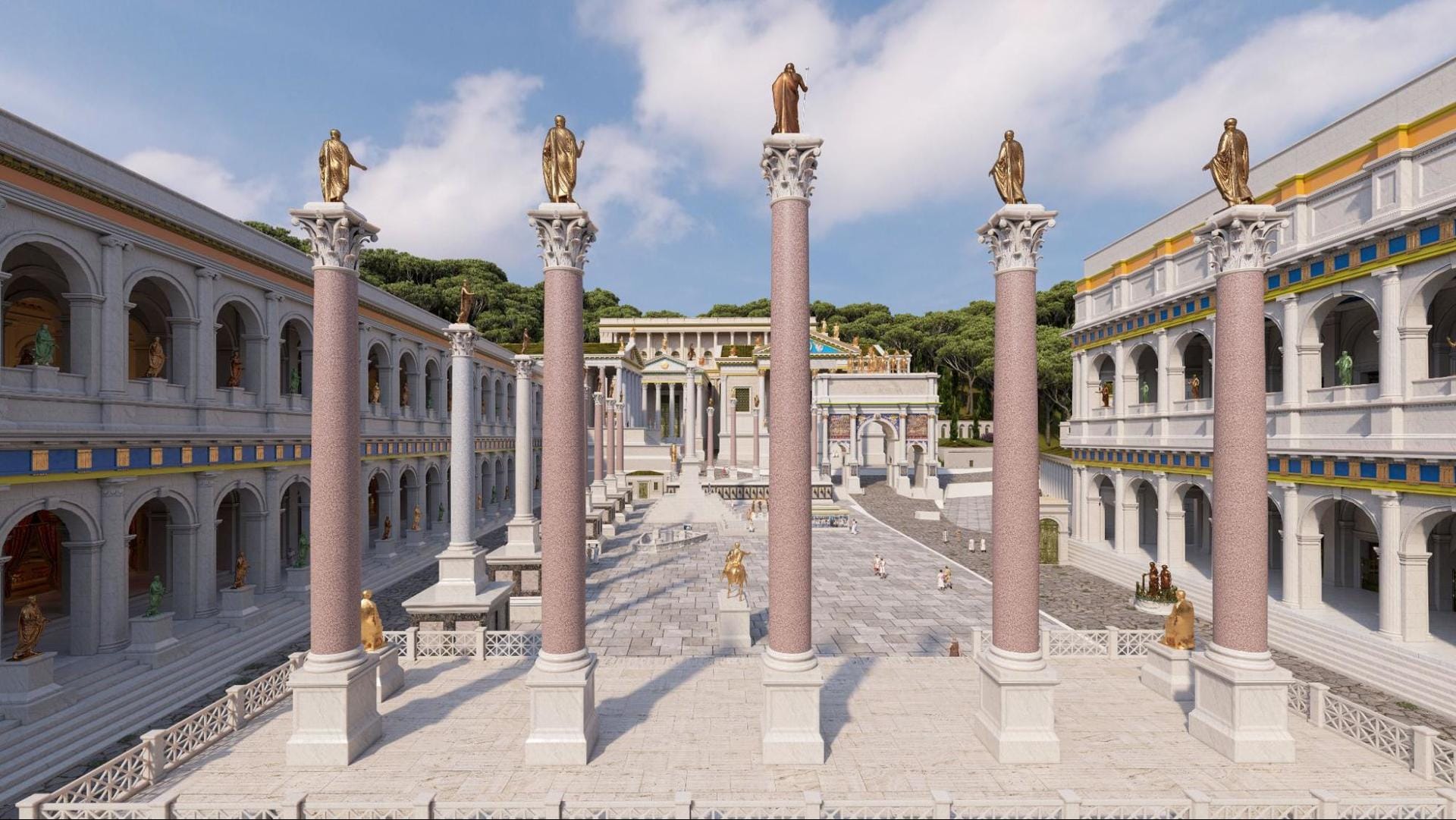
View of the Roman Forum (Rome, Italy) as it appeared in ca. AD 320. The virtual camera is set behind the Late-Antique Rostra topped by five monumental columns. To the right is a section of the face of the Basilica Aemilia and the Basilica Julia. Almost everything seen in this rendering has disappeared or at most left behind only fragmentary remains.
Which has been your favorite project so far?
BF: My training was in Roman Archaeology and Roman Studies, so my favorite project is “Rome Reborn” and a related project, ”Hadrian’s Villa Reborn.” I love these projects because they combine awesome works of architecture and important works of art. Both the art and the buildings are now in generally poor condition, so our digital restoration work shines and shows the potential of virtual tourism to make it easy for the public to visualize cultures of the past. I may even make the bold claim that a virtual tour of, say, the Roman Forum in our “Rome Reborn” series gives the participant a better understanding than an actual visit to the ruins.
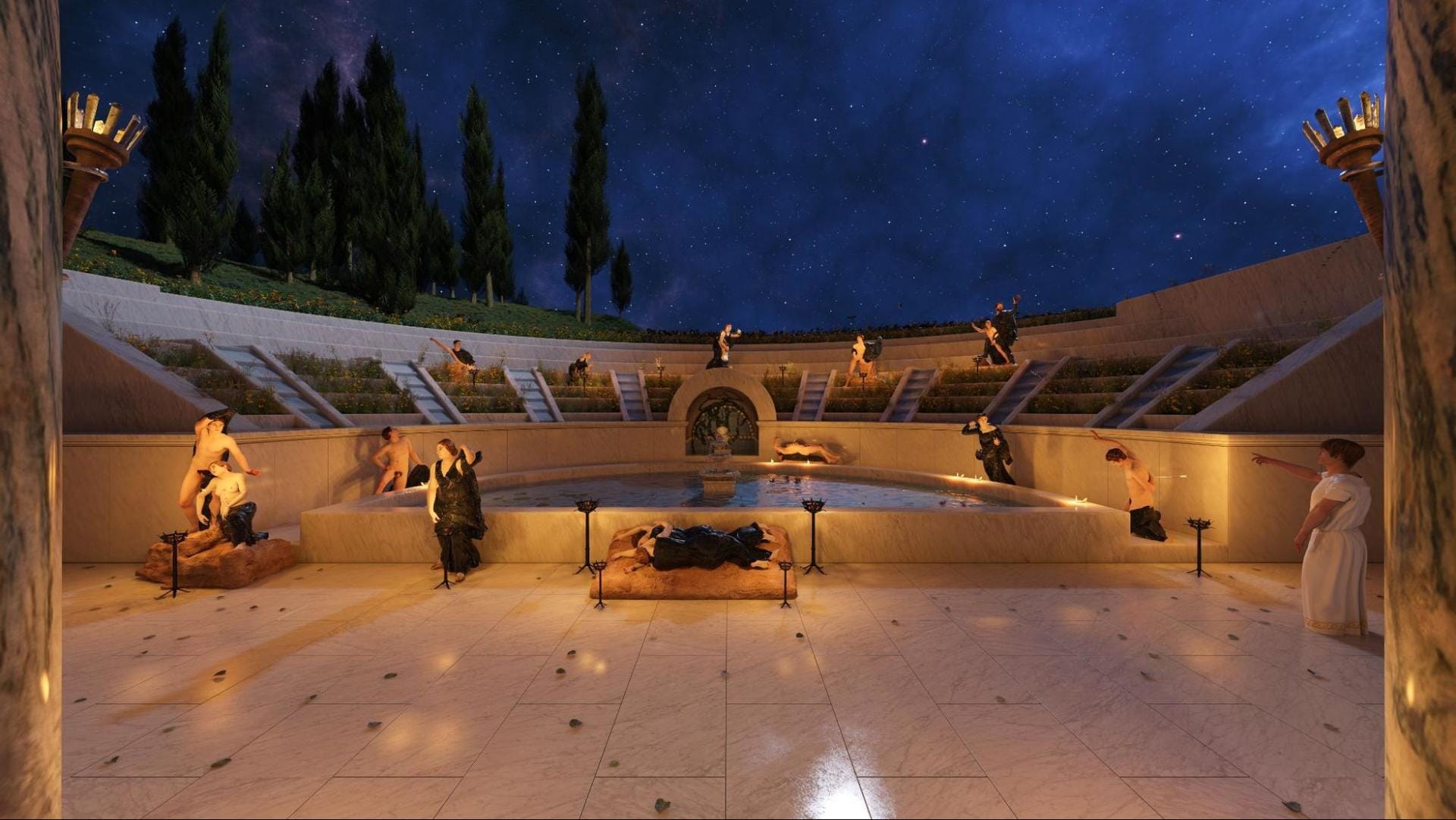
The South Nymphaeum of the Stadium Garden at Hadrian’s Villa (Tivoli, Italy) as it appeared at night in ca. AD 140. Decorating the nymphaeum (a monumental fountain) are sixteen statues illustrating the tale of Niobe. Today, the site is a grassy hillside. Only a few damaged fragments of the statues survive, which Flyover Zone’s Artistic Director Mohamed Abdelaziz has digitally repaired.
What was your workflow before using Chaos Cloud?
BF: We rendered still images and video clips on our workstations. This was very time-consuming and blocked our best equipment from being used by our graphic artists for hours or even days at a time. It was far better to use Chaos Cloud to get the work done quickly with a minimum of human intervention.
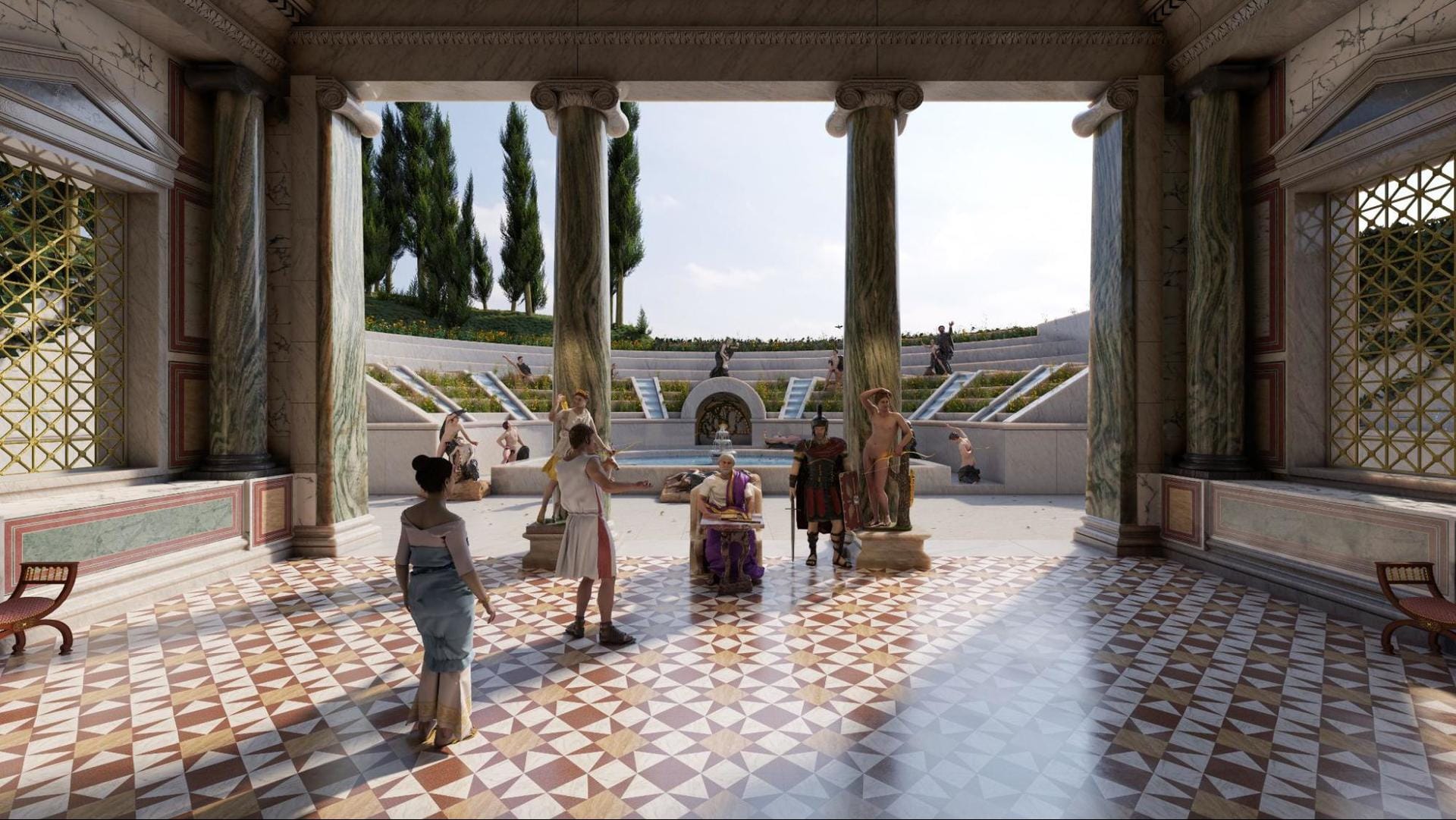
The interior of the South Hall at Hadrian’s Villa (Tivoli, Italy) as it might have appeared late in the reign of Emperor Hadrian (ruled AD 117-138). The figures inside the hall are people from around the Roman Empire who have come to attend an imperial audience with the emperor. Today, the site is a grassy field punctuated by a few remains of the ancient structures.
What were some of the major challenges prior to using Chaos Cloud?
BF: The typical problem was simply to render video for the online stores we use to sell our virtual tours, such as Apple, Google, Oculus, and Steam. We could do such rendering in-house, but the amount of time required slowed us down in bringing our products to market.
Occasionally, we also have to render 2D stills at insane resolution. An example is our rendering of a cubic panorama of the four sides of the Roman Forum. We needed to render a panorama at 40k to be printed by a billboard shop in Germany and used to cover the walls of a temporary exhibition gallery featuring our “Rome Reborn: Roman Forum” virtual tour. It took very little time and money to do the renderings on Chaos Cloud. We were very happy with the results—as is the museum in Bonn, Germany.
Once we started to use Chaos Cloud, we knew we had found what we were looking for: speed, reasonable pricing, and amazingly fast and helpful technical support.”
Bernard Frischer, Founder and President, Flyover Zone
Did Chaos Cloud replace a similar service, or is this the first time you have used cloud rendering?
BF: We used various render farms before Chaos Cloud. We could never find a good fit; therefore, we didn’t develop any loyalty to a specific farm. Once we used Chaos Cloud, we knew we had found what we were looking for: speed, reasonable pricing, and amazingly fast and helpful technical support.
Chaos Cloud is perfect for time-critical projects and animation deadlines.”
Bernard Frischer, Founder and President, Flyover Zone
How did your workflow benefit from using Chaos Cloud?
BF: Using Chaos Cloud gave us a much higher speed in rendering and quality, especially given the size of the scene and the length of the animation. The options are very simple and straightforward, plus now we can choose multiple cameras to render through the cloud without re-uploading the scene again, which saves even more time. Chaos Cloud is perfect for time-critical projects and animation deadlines.
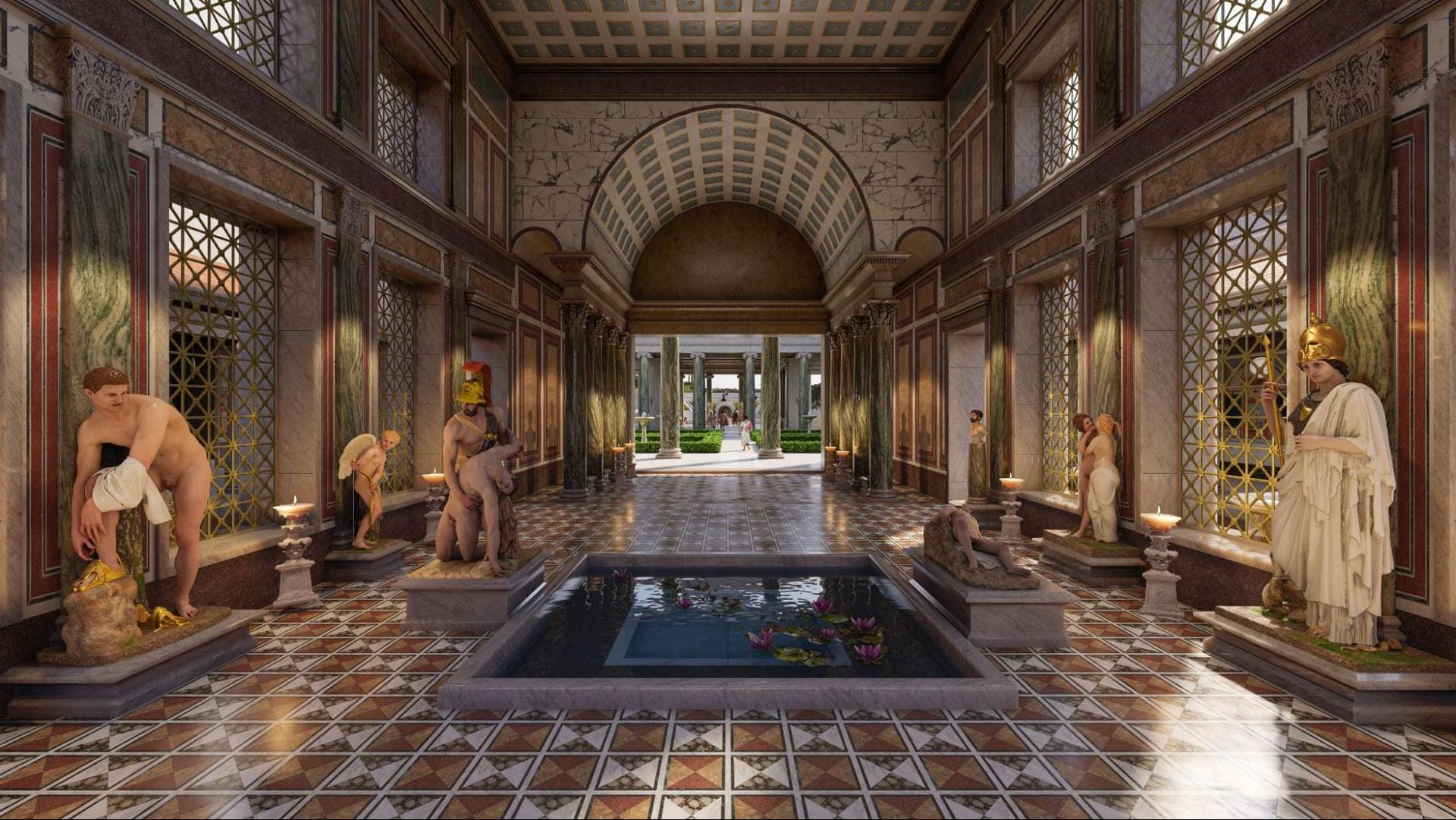
The interior of the North Hall at Hadrian’s Villa (Tivoli, Italy). Today, the area is a grassy field with an occasional visible foundation wall. Flyover Zone’s virtual reconstruction accepts architectural historian Adolf Hoffmann's theory that the space was used as a sculpture gallery. The company has filled the surviving bases with statues known to come from the villa but found there in modern times, out of their ancient context.
What are you working on next?
BF: We are working on a whole new way to deliver and license our virtual tours that takes advantage of 5G streaming. We hope that our streaming app will be available late in 2021. When we release it, we will include the new virtual tours we are creating this year, including “Athens Reborn: Acropolis,” “Mexico Reborn: Tenochtitlan,” “Great Monuments of Egypt: Red Chapel of Hatshepsut,” and “Great Monuments of Egypt: Tomb of Ramesses VI.”

